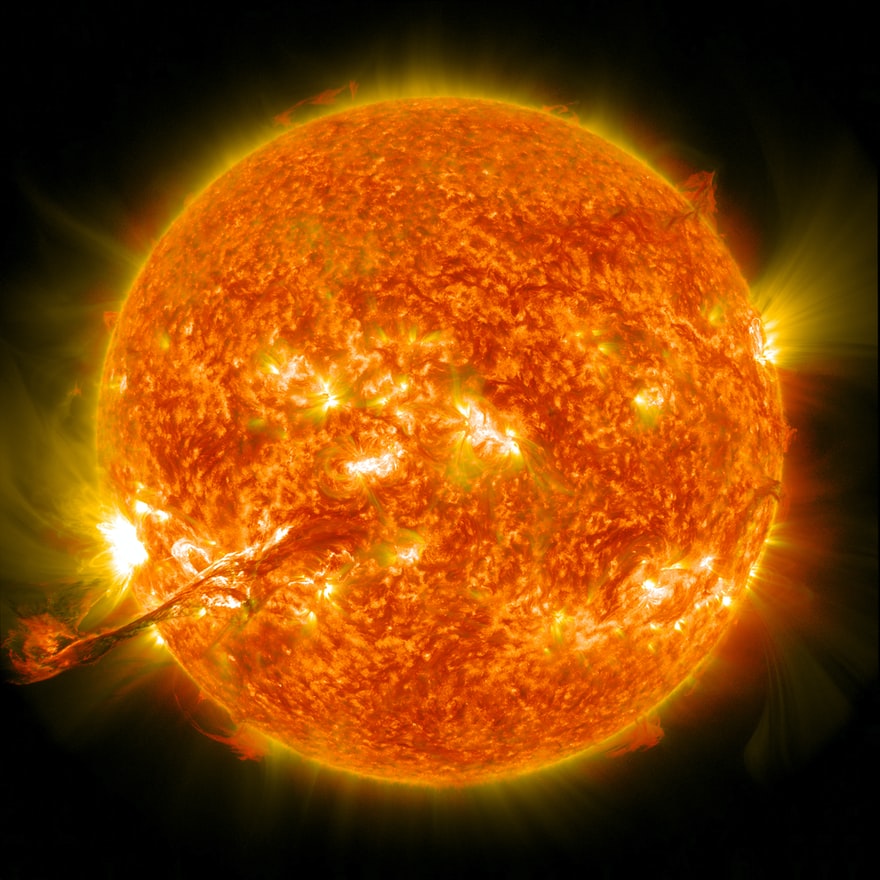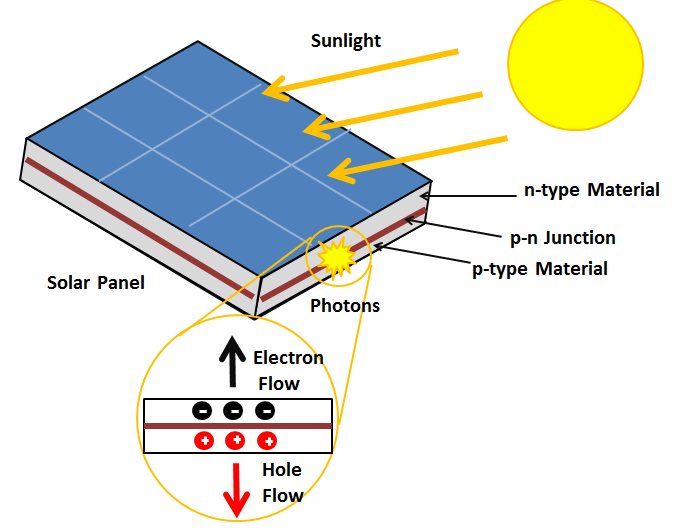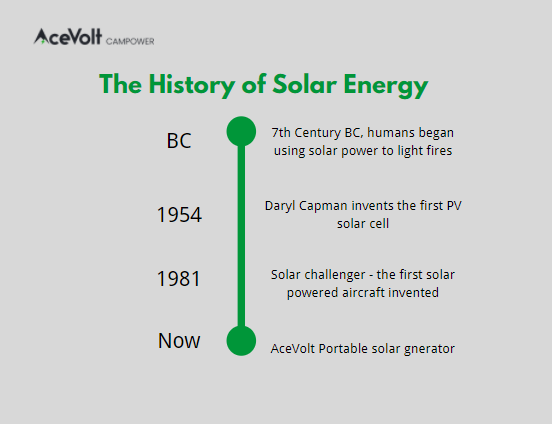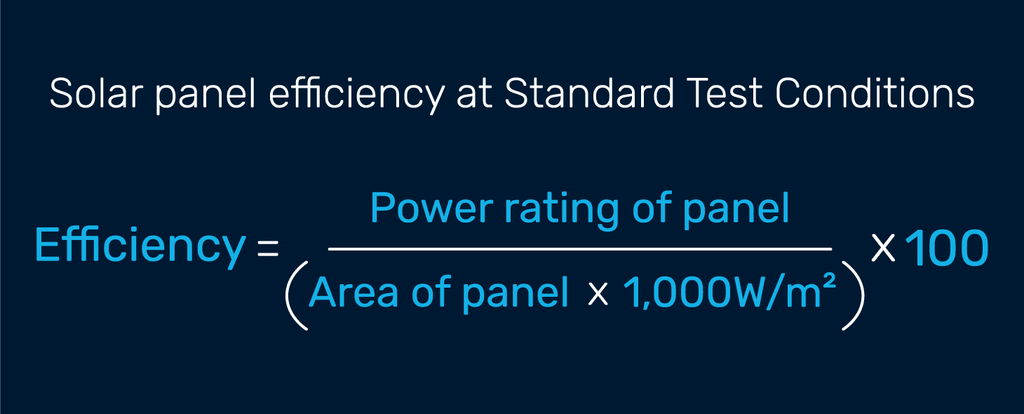
The History Of Solar Energy
Without the Sun, Earth would be a frigid sphere of ice, with no prospect of life. The history of solar energy is an inspiring tale of invention and progress. In today's world, almost everyone is acquainted with modern-day solar technology. Solar energy is widely used by energy providers, households, and businesses to generate electricity. Despite this, many people might be unaware that solar technology dates back many centuries; after all, the Sun has been around for 4.603 billion years.
This article aims to discuss the history of solar energy and the continuous growth it has made throughout these years.
How old is the Sun, and how was it created?
The Sun, located in the center of our solar system, is around 109 times the diameter of the Earth and houses 99.8% of the solar system's mass. The surface temperature of the Sun is approximately 10,000℉ (5,500℃), and the temperature of its core can reach up to twenty-seven million℉ (15 million℃).
The Sun came into existence around 4.6 billion years ago. Most scientists believe that the Sun and the rest of the solar system have arisen from a gigantic revolving cloud of gas and dust known as the solar nebula. The effect of gravity made the nebula collapse. As a result, it spun faster and flattened into a disk. The majority of the material was drawn toward the center to make a yellow dwarf star known as the Sun.

When was solar energy first used?
According to history, humans harnessed solar energy as early as the 7th century BC. It was first used to light fires with magnifying glass materials. Later, in the 3rd century BC, the Greeks and Romans employed mirrors to use solar power to light torches for religious events. The term "burning mirrors" was used to describe them, and they became the mainstream instruments afterward. Later around 20 AD, Chinese civilization also used mirrors for the same purpose.
The notion of "sunrooms" in buildings was another early application of solar energy that is still popular today. Massive windows were installed in these sunrooms to focus sunlight into a single concentrated area. Sunrooms were used in some of the most famous Roman bathhouses, often located on the south-facing side of buildings.
Researchers and scientists successfully harnessed sunlight to power ovens for lengthy trips in the late 1700s and 1800s. They also used the Sun's energy to create solar-powered steamboats.
From all these archives, it's apparent that using the Sun's energy was a routine activity even thousands of years before the invention of solar panels.
The Photovoltaic Effect in the 19th Century:
The photovoltaic effect was discovered in 1839 by a scientist named Alexandre Edmond Becquerel. The blueprints of the first solar collector surfaced during the same period, and after that, the scientist continued to experiment with electrolytic cells. Alexandre Edmond Becquerel was also the first scientist to observe that exposing more cells to light could generate even more power.
In 1876, science made significant progress in the field of solar energy. Scientists discovered Selenium, a metalloid that could convert light into electricity without using heat. In 1883, the scientist constructed the first solar cell with Selenium, just seven years after its discovery, which also cleared the stage for further advancement.
The first commercial solar water heater was developed in 1891, and with that, the actual roots of modern-day solar power were laid.

When were solar panels invented?
In 1908, scientists created the first solar collector, almost identical to the collectors that we use today. World War 2, which lasted from 1939 to 1945, led to a global energy crisis resulting in an increased number of passive solar buildings in the United States. Daryl Chapin, Calvin Fuller, and Gerald Pearson of Bell Labs played a pivotal role in mitigating the energy crisis of the USA by developing the first silicon photovoltaic cell in 1954.
Unlike Selenium, these photovoltaic cells could generate enough power to run electrical devices continuously. After 1954, solar energy made another huge stride, and a variety of solar-powered products became widely available. People also started to use solar technology to heat water for domestic purposes and in commercial buildings.
Things started to alter again in 1970 as the engineers designed an improved and efficient variant of silicon solar cells. These cells were a far cheaper option than previous inventions, and as the technology progressed, the use of solar in various applications became increasingly viable. Solar could now provide energy to power cars and even airplanes. On the other hand, solar farms grew in popularity because of their ability to generate power on a grander scale.

Significant events in the history of solar energy:
Take a look at the brief history of the most prominent events that led to solar power becoming the success it is today.
Solar panels in outer space:
Satellites became one of the early beneficiaries of solar energy. In 1958, the Vanguard I satellite's radios were powered by a small one-watt solar panel. After that, NASA launched the first Nimbus spacecraft in 1964, a satellite that could fully function on a 470-watt solar array.
First solar residence:
The University of Delaware constructed the first solar building, dubbed Solar One, in 1973. Their power system was a combination of solar thermal and solar PV energy.
Solar-powered airplanes:
Paul MacCready created Solar Challenger in 1981, the first solar-powered aircraft, and flew it over the English Channel from France to the United Kingdom. In 1998, the remote-controlled solar aircraft Pathfinder achieved an altitude record by reaching 80,000 feet. In 2016, Bertrand Piccard's Solar Impulse 2, the world's largest and most powerful solar-powered airplane to date, accomplished the first zero-emissions flight across the globe.
The cost and efficiency of solar panels over the years:
The discovery of the photovoltaic effect boosted the efficiency of early solar panels to approximately 1%, and the cost of solar power was roughly $300 per watt. At the time, the cost of coal-fired power was between $2 and $3 per watt.
Bell Labs' silicon solar cells had an initial efficiency of 4%, eventually improving to 11%. This enormous improvement in efficiency resulted in the commercial adoption of solar technology. Hoffman Electronics attained 10% efficiency in 1959. One year later, they broke their previous record with a 14 percent energy efficiency. In the 1970s, Exxon financed the research of Dr. Elliot Berman, which resulted in a less expensive solar cell and lowered the cost of solar power to around $20 per watt.
Currently, solar panels have a 15 to 18 percent efficiency and can cost as little as $0.50 per watt. Scientists and engineers devoted to solar energy are responsible for these advancements in solar technology and cost reduction.
How is solar panel efficiency calculated?
Under Standard Testing Conditions (STC), all solar panels are tested at 25°C operating temperature with 1,000 watts per square meter solar irradiance (the amount of sunshine reaching the panel).
To calculate the efficiency of a solar panel under STC, divide the power rating by the area of the panel times the irradiance, times 100.

AceVolt has developed a 200-Watt portable solar panel that can provide sufficient energy to keep your devices running while enjoying an RV trip or camping. This solar panel can fully charge a 672wh AceVolt Campower in just 4 hours. Having a portable solar panel allows you to travel without having to stop and find a power source to recharge your electronics. Whether you need electricity for cooking, lights, or gadgets, AceVolt's portable solar panels will provide it instantly. Here is another guide to explain 'What Is The Battery Capacity Of A Portable Power Station'.
Development of portable solar panels:
In the modern-day world, we are largely dependent on electronic gadgets to function correctly. Most of these gadgets are battery-powered, and we have to recharge them after short intervals to keep them alive and running. For people who love outdoor adventures, these electronic gadgets are indispensable, and the only way they can recharge these devices is through a portable power supply.
Portable solar panels are an excellent power supply solution for campers since they are eco-friendly and offer silent operation. These panels have zero carbon footprint, and you can move them from one place to another effortlessly.
According to the National Renewable Energy Laboratories of the USA, the cost of utility-scale solar energy has significantly fallen by 30%. This considerable decrease and reduced hardware prices have prompted several companies to transition to solar power.
The worldwide portable solar charger market was worth USD 492.20 million in 2019 and is predicted to grow at a CAGR of roughly 13.15 percent to USD 1168.76 million by 2026.
Advantages of solar generators:
Free energy from the Sun:
Traditional gas-powered generators need frequent refueling as they consume a considerable amount of fuel regularly. With a solar generator, there are no expenditures on fuel. You just have to install a solar panel and take advantage of the free energy provided by the Sun.
Eco-friendly:
The energy used by solar generators is completely renewable. You don’t have to worry about the cost of fossil fuels to power your generator or the environmental effect of using gasoline.
Solar generators create and store energy without emitting any pollutants. Thus, you can relish your camping or RV trip knowing you aren't doing any harm to the environment.
Low-maintenance and noiseless operation:
Another advantage of solar generators is their noiseless operation. Solar generators, unlike gas generators, have no moving components, which minimizes the amount of noise they make while running.
Furthermore, no moving components mean that the risk of breakdown is negligible. Compared to a gas generator, the amount of maintenance necessary for a solar generator is minimal.
ACEVOLT CAMPOWER 700W portable power station solar generator comes with an intelligent system of double protection, fault self-check, self-repair, and high-efficiency solar charging MPPT. This eco-friendly solar generator is exclusively designed to meet the needs of campers. It also features led lighting, warning lights, a super power-saving mode, and multiple DC / AC output ports. ACEVOLT CAMPOWER 700W portable solar generator is capable of supporting multiple electronic devices at the same time.

The modern age of solar energy:
In the past few decades, we have witnessed continuous advancements in the field of solar energy and the commitment that various governments have shown towards the industry's expansion. Researchers continue to smash efficiency records and build more affordable, practical technologies, allowing for broader adoption of solar usage.
Governments have also begun enacting significant financial incentives to encourage greater use of solar energy. The popularity and reputation of solar power as a dependable energy source has grown in the USA since the late 2000s. The country has also erected its millionth solar installation earlier this year, a feat that took more than 50 years to achieve. But, looking at the positive perspective, this number is expected to be doubled in the next two years.
Related Product























Leave a comment